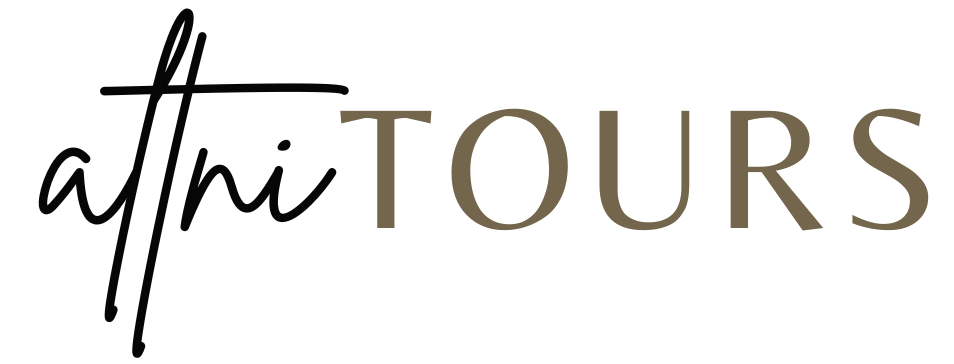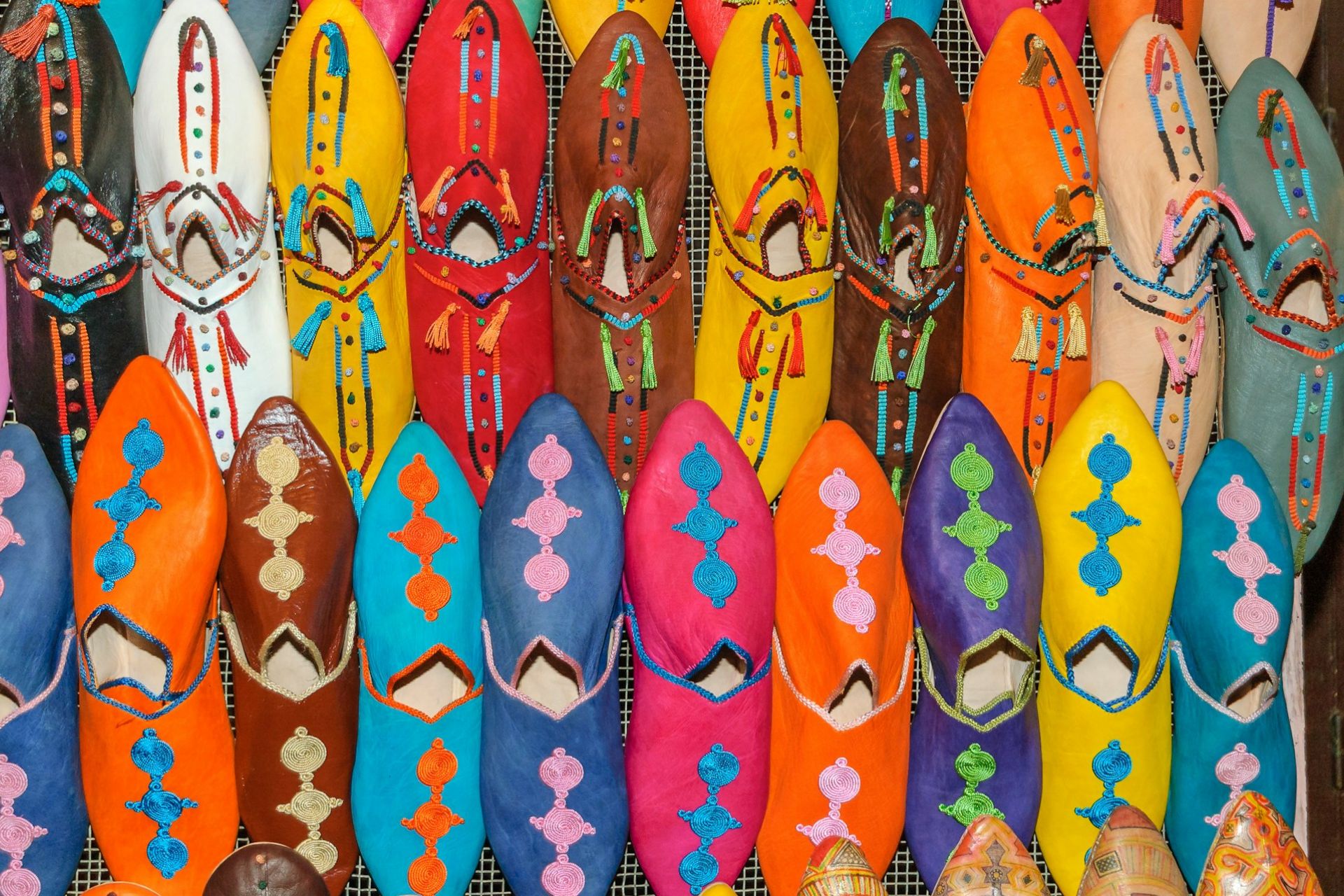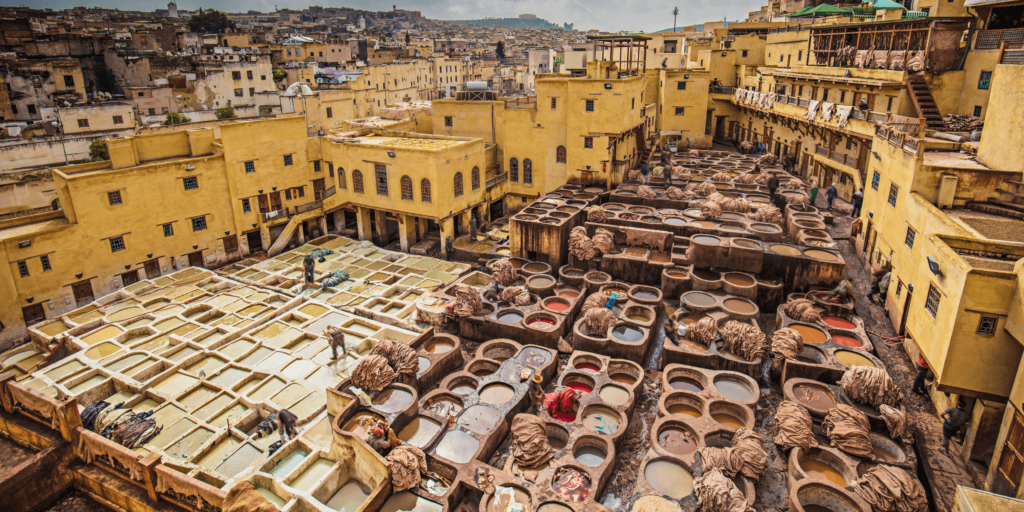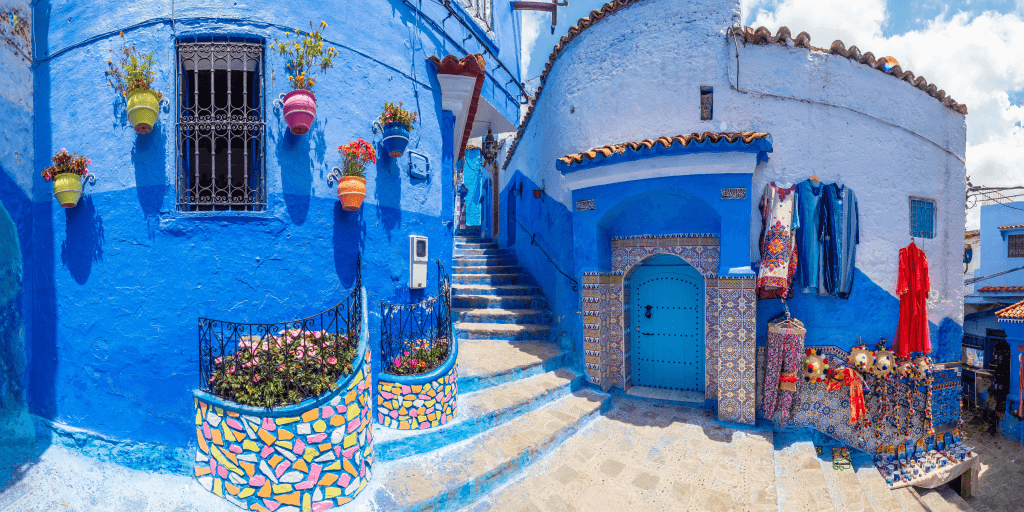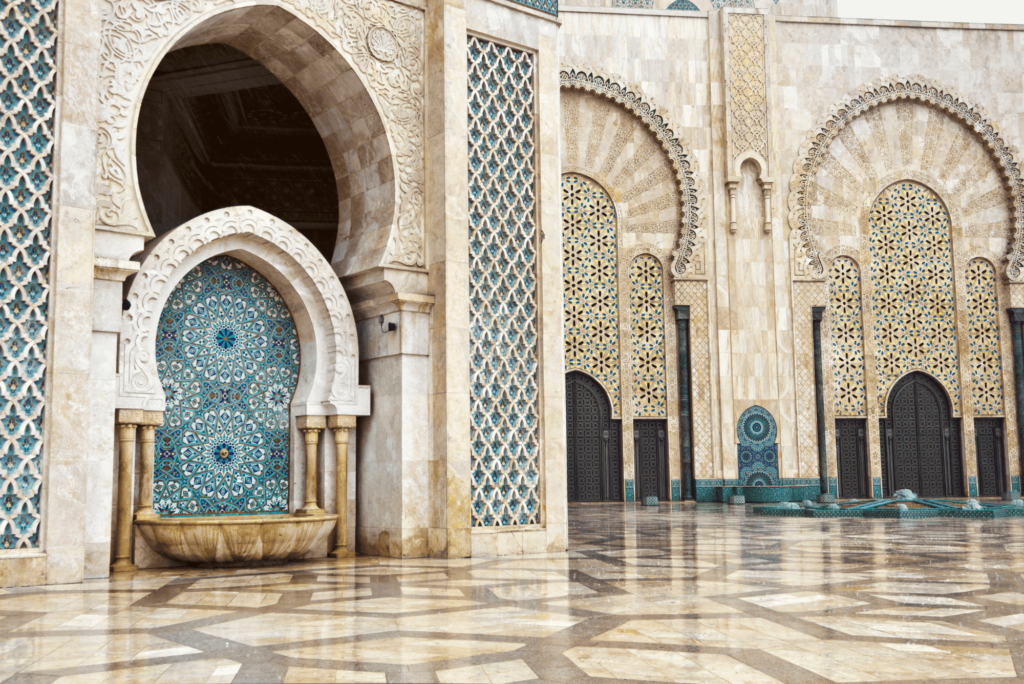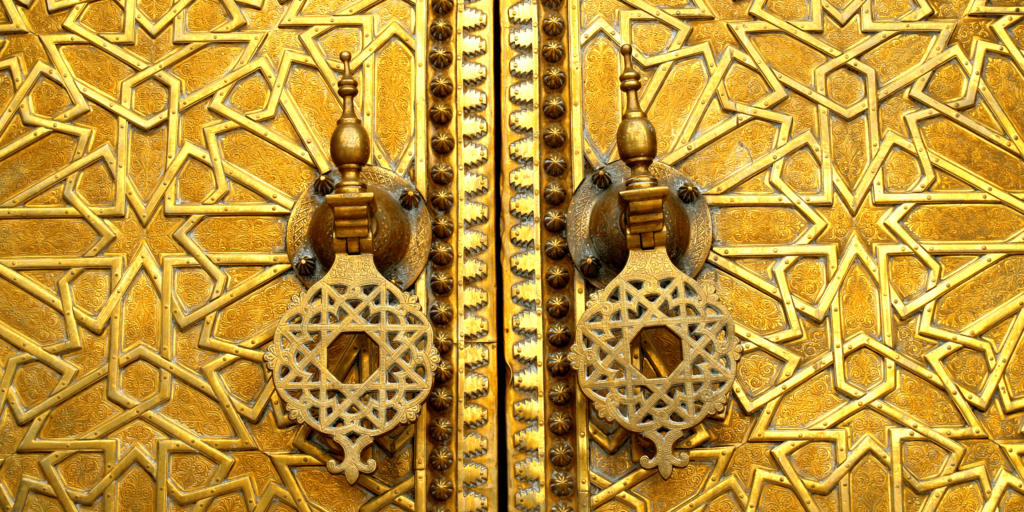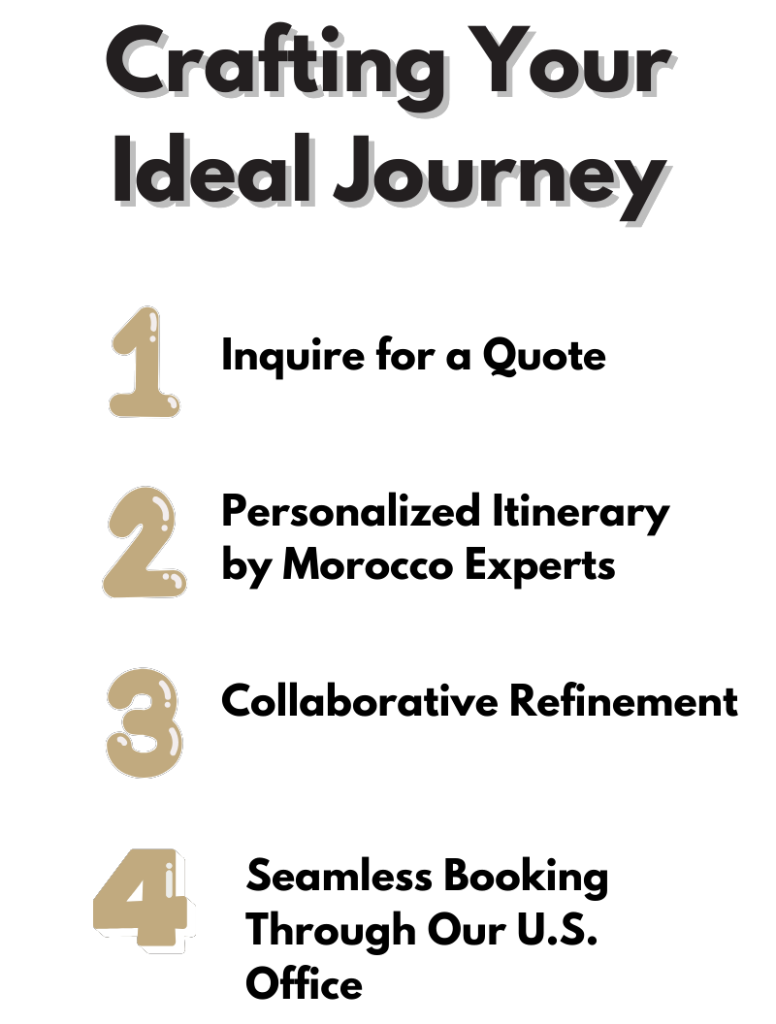Top 10 Things To Do In Morocco
Imagine stepping into a world where ancient traditions blend seamlessly with modern marvels, where the air is thick with the scent of exotic spices, and every corner holds a new adventure. Welcome to Morocco, a land of enchantment that beckons travelers with its vibrant colors, rich history, and warm hospitality.
Are you ready to embark on a journey that will awaken your senses and create memories to last a lifetime? From the bustling medinas of Marrakech to the serene Sahara Desert, Morocco offers a treasure trove of experiences waiting to be discovered. Whether you’re a culture enthusiast, a food lover, or an adventure seeker, this North African gem has something extraordinary in store for you.
Join us as we unveil the top 10 things to do in Morocco that will transform your trip into an unforgettable odyssey. From exploring iconic landmarks and indulging in mouth-watering cuisine to hiking in the majestic Atlas Mountains and relaxing in traditional hammams, we’ll guide you through the very best this captivating country has to offer. Get ready to immerse yourself in the magic of Morocco!
Table of Contents

Discover Morocco’s vibrant medinas.
Now that we’ve introduced Morocco, let’s dive into one of its most enchanting experiences: exploring the vibrant medinas. These ancient walled cities are the heart and soul of Moroccan culture, offering a sensory journey through time and tradition.
Wander through Morocco’s bustling souks in Marrakech.
Marrakech, known as the “Red City,” boasts one of the most famous medinas in Morocco. As you step into its labyrinthine souks, you’ll be immediately enveloped by a kaleidoscope of sights, sounds, and scents. Here’s what you can expect:
- Colorful spice pyramids and aromatic herbs
- Intricate lanterns casting mesmerizing patterns
- Handcrafted leather goods and vibrant textiles
- Street food vendors offering traditional delicacies
Tip: Bargaining is an essential part of the souk experience. Start at about 30-40% of the initial asking price and negotiate from there.
Discover the ancient alleyways of Fez, Morocco.
Fez, the cultural and spiritual capital of Morocco, is home to the world’s largest car-free urban area. Its medina, a UNESCO World Heritage site, offers a truly immersive experience:
| Feature | Description |
|---|---|
| Alleyways | Over 9,000 narrow streets and alleys |
| Age | Founded in the 9th century |
| Highlights | Tanneries, madrasas, and fondouks |
Don’t miss the chance to visit the iconic Chouara Tannery, where leather has been produced using traditional methods for centuries. The view from surrounding terraces is unforgettable, though you might want to accept the offered mint sprig to combat the strong odors!

Experience the blue-washed streets of Chefchaouen, Morocco.
For a unique medina experience, head to Chefchaouen, nestled in the Rif Mountains. This picturesque town is famous for its striking blue-painted buildings, creating a dreamlike atmosphere. Here’s why it’s a must-visit:
- Photogenic blue streets and alleys
- Relaxed, artistic vibe
- Stunning mountain backdrop
- Fusion of Moroccan and Andalusian architecture
As you wander through Chefchaouen’s medina, you’ll find charming craft shops selling local handicrafts, including woolen garments and woven blankets. The main square, Plaza Uta el-Hammam, is perfect for people-watching and enjoying a mint tea at a café.
Exploring Morocco’s medinas offers a window into the country’s rich history and vibrant culture. Each medina has its own unique character, from the bustling energy of Marrakech to the spiritual depth of Fez and the artistic charm of Chefchaouen. As you navigate these ancient urban labyrinths, you’ll discover the true essence of Morocco, where tradition and modernity intertwine seamlessly.

Visit iconic Moroccan landmarks
Now that we’ve explored the vibrant medinas, let’s dive into some of Morocco’s most iconic landmarks. These architectural marvels and historical sites offer a glimpse into the country’s rich cultural heritage and diverse influences.
Marvel at the Hassan II Mosque in Casablanca, Morocco.
Perched on the Atlantic coast, the Hassan II Mosque is a breathtaking example of modern Moroccan architecture. This magnificent structure boasts:
- The world’s tallest minaret at 210 meters (689 feet)
- A capacity to accommodate 25,000 worshippers inside and 80,000 in the courtyard
- Intricate tilework, carved stone, and painted wood ceilings
Visitors can take guided tours to admire the mosque’s stunning interior, which features:
| Feature | Description |
|---|---|
| Prayer Hall | Vast space with a retractable roof |
| Ablution Room | Beautiful fountains and mosaic tiles |
| Hammam | Traditional Moroccan bath (not in use) |
Explore the Roman ruins of Volubilis, Morocco.
Step back in time at Volubilis, a UNESCO World Heritage site that showcases Morocco’s Roman past. This well-preserved archaeological site offers:
- Impressive mosaics depicting mythological scenes
- Triumphal arch dedicated to Emperor Caracalla
- Remnants of grand public buildings and private residences
Highlights of Volubilis include:
- The Capitoline Temple
- The Basilica
- The House of Orpheus with its famous dolphin mosaic
- Panoramic views of the surrounding countryside
Admire the intricate architecture of Bahia Palace in Morocco.

Located in Marrakech, the Bahia Palace is a stunning example of late 19th-century Moroccan architecture. This opulent complex features:
- Intricate stucco work and painted wooden ceilings
- Colorful zellij (mosaic tilework)
- Tranquil courtyards and gardens
The palace’s most notable areas include:
- The Grand Courtyard
- The Harem Quarters
- The Reception Hall
- The Private Apartments
As you explore these iconic landmarks, you’ll gain a deeper appreciation for Morocco’s architectural prowess and historical significance. Each site offers a unique perspective on the country’s cultural evolution, from ancient Roman influences to Islamic artistry and modern interpretations of traditional designs.
Next, we’ll embark on an unforgettable adventure into the Sahara desert, where you’ll experience the magic of Morocco’s vast sand dunes and nomadic traditions.

Embark on a Sahara Desert adventure in Morocco.
Now that we’ve explored the vibrant medinas and iconic landmarks of Morocco, it’s time to venture into one of the country’s most breathtaking landscapes: the Sahara Desert. This vast expanse of golden sand dunes offers an unforgettable experience that combines adventure, culture, and natural beauty.
Ride a Camel Through Golden Sand Dunes
No Sahara adventure is complete without a camel trek across the mesmerizing dunes. As you mount your dromedary steed, you’ll feel transported to another time, following in the footsteps of ancient caravans that once crossed these sands. The gentle sway of the camel’s gait allows you to fully absorb the vast, undulating landscape around you.
| Camel Trekking Benefits | Description |
|---|---|
| Unique perspective | Experience the desert from a higher vantage point |
| Eco-friendly | Low impact on the fragile desert ecosystem |
| Cultural immersion | Connect with traditional Berber culture |
| Photographic opportunities | Capture stunning images of the desert landscape |
Spend a Night in a Traditional Berber Camp
As the day’s journey comes to an end, you’ll arrive at a traditional Berber camp nestled among the dunes. These camps offer a blend of comfort and authenticity, allowing you to experience desert life while enjoying modern amenities. You’ll sleep in nomadic-style tents adorned with colorful Moroccan textiles and carpets.
Highlights of staying in a Berber camp include:
- Enjoying traditional Moroccan cuisine under the stars
- Listening to Berber music and storytelling around a campfire
- Learning about nomadic culture from local guides
- Experiencing the profound silence of the desert at night
Witness a Breathtaking Desert Sunset
As evening approaches, prepare yourself for one of nature’s most spectacular shows. The Sahara sunset transforms the landscape into a canvas of warm hues, painting the dunes in shades of gold, orange, and pink. Find a quiet spot atop a dune to watch as the sun slowly dips below the horizon, creating an unforgettable tableau that will remain etched in your memory.
Stargaze in the Clear Night Sky
Once darkness falls, the Sahara reveals another of its treasures: an unparalleled view of the night sky. Far from light pollution, the desert offers optimal conditions for stargazing. The vast expanse of stars stretching across the inky blackness is truly awe-inspiring.
Consider these stargazing tips:
- Allow your eyes to adjust to the darkness for at least 30 minutes
- Bring a star chart or download a stargazing app to identify constellations
- If possible, time your visit with a new moon for the darkest skies
- Pack a pair of binoculars for a closer look at celestial objects
As your Sahara adventure comes to an end, you’ll find yourself forever changed by the majesty and serenity of the desert. With memories of camel rides, Berber hospitality, stunning sunsets, and starry nights, you’ll carry a piece of the Sahara’s magic with you as you continue your Moroccan journey. Next, we’ll explore another essential aspect of Moroccan culture: its mouthwatering cuisine.

Indulge in Moroccan Cuisine
Now that we’ve explored the iconic landmarks of Morocco, it’s time to tantalize your taste buds with the country’s rich culinary traditions. Moroccan cuisine is a delightful fusion of flavors, influenced by Arab, Berber, and Mediterranean cultures. Let’s dive into three unmissable gastronomic experiences that will make your Moroccan adventure truly unforgettable.
Take a Cooking Class to Learn Traditional Recipes
One of the best ways to immerse yourself in Moroccan culture is by learning to prepare authentic dishes. Many cities offer cooking classes where you can master the art of crafting traditional recipes. Here’s what you can expect from a typical Moroccan cooking class:
- Learn to blend aromatic spices like cumin, saffron, and cinnamon
- Master the technique of cooking in a tagine, a conical clay pot
- Discover the secrets of making fluffy couscous from scratch
- Create mouthwatering dishes like chicken tagine with preserved lemons or vegetable bastilla
| Dish | Main Ingredients | Cooking Method |
|---|---|---|
| Tagine | Meat or vegetables, spices | Slow-cooked in clay pot |
| Couscous | Semolina wheat, vegetables | Steamed |
| Bastilla | Phyllo dough, meat or vegetables | Baked |
These hands-on experiences not only provide you with valuable culinary skills but also offer insights into Moroccan culture and hospitality.
Sample Street Food in Djemaa el-Fna Square
No culinary journey in Morocco is complete without a visit to the bustling Djemaa el-Fna square in Marrakech. As night falls, this UNESCO-recognized cultural space transforms into a vibrant food market. Here’s what you shouldn’t miss:
- Freshly squeezed orange juice from colorful carts
- Steaming bowls of harira, a hearty soup perfect for cool evenings
- Grilled meat skewers (brochettes) seasoned with local spices
- Snail soup, a local delicacy for the adventurous eater
- Sweet chebakia, a honey-coated sesame cookie often enjoyed during Ramadan
As you wander through the square, let your senses guide you. The sizzling sounds, enticing aromas, and lively atmosphere create an unforgettable sensory experience.
Enjoy a Mint Tea Ceremony
To round off your culinary adventure, partake in the time-honored tradition of Moroccan mint tea. This isn’t just a beverage; it’s a symbol of hospitality and friendship. Here’s what makes this ceremony special:
- The tea is typically prepared by the head of the household
- It’s made with green tea, fresh mint leaves, and plenty of sugar
- The tea is poured from a height to create a frothy top
- It’s usually served three times, following the Moroccan proverb: “The first glass is as bitter as life, the second is as strong as love, the third is as soothing as death”
Participating in a mint tea ceremony offers a moment of relaxation and reflection, allowing you to connect with locals and fellow travelers alike.
With these culinary experiences under your belt, you’ll have truly savored the flavors of Morocco. Next, we’ll explore another quintessential Moroccan experience that will rejuvenate both your body and spirit.

Relax in a traditional hammam
Now that you’ve explored the vibrant medinas and indulged in Moroccan cuisine, it’s time to unwind and experience one of Morocco’s most cherished traditions: the hammam. This ancient bathing ritual offers a unique blend of relaxation, cleansing, and cultural immersion that’s essential to any Moroccan vacation.
Experience a traditional Moroccan bath
A hammam visit is more than just a bath; it’s a sensory journey that cleanses both body and mind. As you enter the dimly lit, steam-filled chamber, you’ll immediately feel the stress of your travels melt away. The process typically involves:
- Acclimatizing to the heat in the warm room
- Moving to the hot room for deep sweating
- Exfoliation with black soap and a kessa glove
- Rinsing with buckets of warm water
- Cooling down in the cold room
| Stage | Duration | Benefits |
|---|---|---|
| Warm room | 10-15 minutes | Opens pores, relaxes muscles |
| Hot room | 15-20 minutes | Deep cleansing, detoxification |
| Exfoliation | 10-15 minutes | Removes dead skin, improves circulation |
| Rinsing | 5-10 minutes | Cleanses and refreshes |
| Cold room | 10-15 minutes | Closes pores, invigorates |

Enjoy a relaxing massage
After the cleansing ritual, treat yourself to a traditional Moroccan massage. These massages often use argan oil, a local product known for its nourishing properties. The techniques employed include:
- Long, sweeping strokes to improve circulation
- Kneading to release muscle tension
- Pressure point stimulation for overall wellness
A skilled masseuse will work out any knots or tension, leaving you feeling rejuvenated and deeply relaxed.
Try local beauty treatments
To complete your hammam experience, indulge in some local beauty treatments that have been used for centuries:
- Rhassoul clay mask: This mineral-rich clay from the Atlas Mountains deeply cleanses and softens the skin.
- Henna tattoos: Temporary body art that’s both beautiful and culturally significant.
- Argan oil hair treatment: Nourishes and strengthens hair, leaving it silky smooth.
These treatments not only enhance your physical appearance but also offer a glimpse into Moroccan beauty traditions that have stood the test of time.
As you emerge from the hammam, you’ll feel refreshed, relaxed, and ready to continue your Moroccan adventure. The experience of a traditional hammam is not just about personal care; it’s a cultural ritual that connects you to the heart of Moroccan lifestyle. With your body and mind rejuvenated, you’ll be prepared to tackle the next exciting activity on your itinerary: hiking in the majestic Atlas Mountains.

Hike in the Atlas Mountains
Now that we’ve explored the delights of Moroccan cuisine and relaxed in traditional hammams, it’s time to lace up your hiking boots and venture into the majestic Atlas Mountains. This stunning mountain range offers breathtaking landscapes, unique cultural experiences, and unforgettable adventures for outdoor enthusiasts.
Trek to remote Berber villages
One of the most rewarding experiences in the Atlas Mountains is trekking to remote Berber villages. These ancient communities have preserved their traditional way of life for centuries, offering visitors a glimpse into Morocco’s rich cultural heritage.
- Guided tours: Join expert local guides who can provide insights into Berber culture and customs
- Homestays: Immerse yourself in village life by staying with a local family
- Traditional crafts: Observe and participate in traditional weaving, pottery, and cooking techniques

Climb Mount Toubkal, North Africa’s highest peak
For adventure seekers, conquering Mount Toubkal is a must-do activity. Standing at 4,167 meters (13,671 feet), it offers a challenging yet achievable climb for experienced hikers.
| Aspect | Details |
|---|---|
| Difficulty | Moderate to challenging |
| Duration | 2-3 days |
| Best time to climb | June to September |
| Starting point | Imlil village |
| Equipment | Proper hiking gear, warm clothing, and sleeping bag |
Tips for climbing Mount Toubkal:
- Acclimatize properly to avoid altitude sickness
- Hire a licensed guide for safety and local knowledge
- Stay at the Toubkal Refuge for a night before summiting
- Start the final ascent early to catch the sunrise from the peak
Explore lush valleys and waterfalls
The Atlas Mountains aren’t just about challenging hikes; they also offer serene landscapes and gentle walks through lush valleys and to stunning waterfalls.
- Ourika Valley: Known for its beautiful scenery and seven-tiered waterfalls
- Ouzoud Falls: Morocco’s highest waterfalls, surrounded by olive groves and old mills
- Paradise Valley: A hidden oasis with natural pools perfect for swimming
When exploring these areas, consider:
- Bringing a picnic to enjoy amidst the natural beauty
- Wearing appropriate footwear for potentially slippery terrain near waterfalls
- Respecting local customs and dress codes, especially in more remote areas
Hiking in the Atlas Mountains offers a perfect blend of natural beauty, cultural immersion, and physical challenge. Whether you’re trekking to remote villages, conquering North Africa’s highest peak, or simply enjoying the serene landscapes, this experience will undoubtedly be a highlight of your Moroccan adventure. As we move on to our next topic, we’ll explore another essential aspect of Moroccan culture: shopping for authentic crafts in bustling markets and traditional workshops.

Shop for authentic Moroccan crafts
Now that we’ve explored the natural wonders of Morocco, let’s dive into one of the country’s most beloved experiences: shopping for authentic Moroccan crafts. The vibrant marketplaces and skilled artisans of Morocco offer a treasure trove of unique, handmade items that capture the essence of this colorful nation.
A. Bargain for handmade carpets and textiles
Morocco is renowned for its exquisite carpets and textiles, each telling a story through intricate patterns and vibrant colors. When shopping for these items:
- Visit traditional souks in cities like Marrakech, Fez, or Rabat
- Look for Berber carpets, known for their geometric designs and rich symbolism
- Explore the variety of textiles, including:
- Colorful silk and cotton fabrics
- Embroidered tablecloths and cushion covers
- Traditional djellabas and kaftans
Remember, bargaining is an integral part of Moroccan shopping culture. Here’s a quick guide to successful bargaining:
| Step | Action |
|---|---|
| 1 | Show interest, but don’t appear too eager |
| 2 | Ask for the price and offer about 30-40% less |
| 3 | Negotiate gradually, meeting in the middle |
| 4 | Be prepared to walk away if the price isn’t right |
| 5 | Always bargain with a smile and respect |
B. Purchase intricate metalwork and ceramics
Moroccan artisans are masters of metalwork and ceramics, creating stunning pieces that blend functionality with artistic beauty.
Metalwork:
- Explore the copper and brass markets in Fez or Marrakech
- Look for intricately designed:
- Lanterns and lamps
- Tea sets and trays
- Decorative plates and bowls
Ceramics:
- Visit Safi, known as the pottery capital of Morocco
- Discover the famous blue pottery of Fez
- Consider purchasing:
- Hand-painted tagine pots
- Colorful mosaic tiles
- Decorative vases and plates
C. Find unique spices and aromatics
No shopping experience in Morocco is complete without exploring the aromatic world of spices and fragrances.
- Visit the spice souks in Marrakech or Fez
- Look for authentic Moroccan spice blends like:
- Ras el Hanout (a mix of up to 30 spices)
- Harissa (a hot chili paste)
- Chermoula (a marinade used in Moroccan cooking)
Don’t forget to explore other aromatic products:
- Argan oil, prized for its culinary and cosmetic uses
- Rose water and orange blossom water
- Traditional Moroccan perfumes and essential oils
When shopping for these authentic Moroccan crafts, take time to appreciate the skill and tradition behind each item. Engage with local artisans, learn about their techniques, and bring home not just souvenirs, but pieces of Moroccan culture and history. Next, we’ll explore the coastal charm of Morocco, where you can relax and unwind after your shopping adventures.

Discover coastal charm
Now that we’ve explored the inland treasures of Morocco, let’s turn our attention to the country’s stunning coastline. Morocco’s Atlantic shore offers a perfect blend of adventure, relaxation, and cultural experiences.
Surf the waves in Taghazout
Taghazout, a small fishing village turned surfing mecca, is a must-visit destination for wave enthusiasts. This laid-back coastal town offers:
- World-class surf spots suitable for all levels
- Year-round waves with peak season from September to April
- Affordable accommodations and surf camps
Popular surf spots in Taghazout
| Spot Name | Difficulty Level | Best For |
|---|---|---|
| Anchor Point | Advanced | Long right-hand waves |
| Panoramas | Intermediate | Consistent waves |
| Hash Point | Beginner/Intermediate | Mellow, fun rides |
| Killer Point | Advanced | Powerful waves |
Explore the picturesque port of Essaouira
Essaouira, a UNESCO World Heritage site, captivates visitors with its blend of Moroccan and European architecture. This charming coastal town offers:
- A well-preserved 18th-century medina
- Bustling fish market and seafood restaurants
- Artisan workshops showcasing local crafts
- Windsurfing and kitesurfing opportunities
Don’t miss the chance to:
- Stroll along the historic ramparts for panoramic ocean views
- Visit the vibrant Skala du Port, a working fishing harbor
- Explore the Jewish Quarter and its rich history
Relax on the beaches of Agadir
Agadir, Morocco’s premier beach resort, is perfect for those seeking sun, sand, and modern amenities. The city’s highlights include:
- A 10-kilometer stretch of golden sand beach
- Year-round sunshine and mild temperatures
- Wide range of water sports activities
- Modern hotels and resorts with excellent facilities
Things to do in Agadir
- Visit the hilltop Kasbah for breathtaking views of the city and coast
- Explore the traditional Souk El Had market for local products
- Take a day trip to Paradise Valley for natural pools and waterfalls
- Enjoy a camel ride along the beach at sunset
As you discover Morocco’s coastal charm, you’ll experience a different side of the country’s diverse landscape and culture. From catching waves in Taghazout to wandering through Essaouira’s historic streets and lounging on Agadir’s sun-soaked beaches, the Atlantic coast offers a perfect complement to your Moroccan adventure. Next, we’ll delve into the vibrant world of Moroccan festivals, where you can immerse yourself in the country’s rich traditions and celebrations.
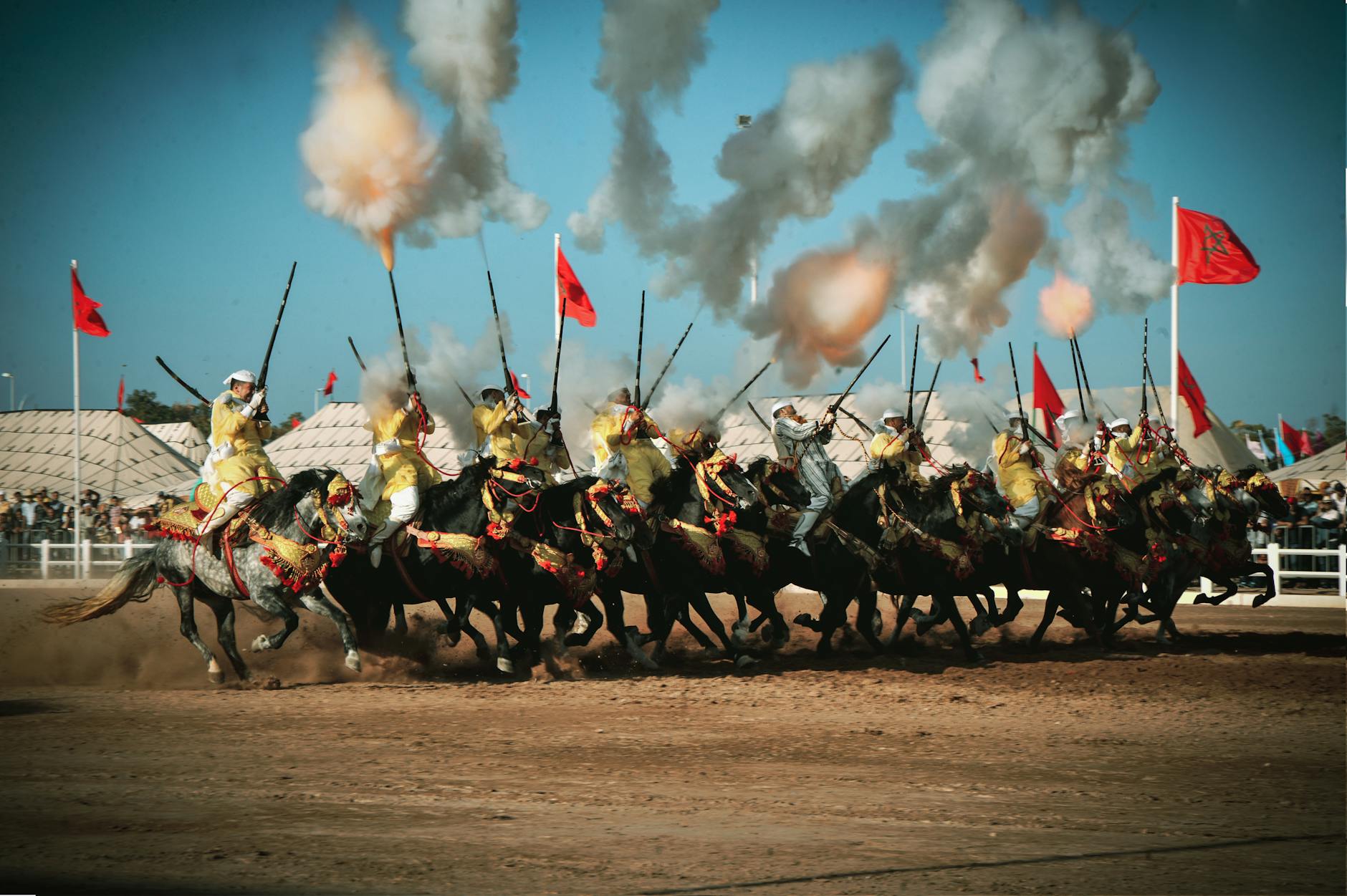
Experience Moroccan Festivals
Now that we’ve explored the various attractions and activities Morocco has to offer, let’s delve into one of the most vibrant aspects of Moroccan culture: its festivals. These events provide a unique opportunity to immerse yourself in the country’s rich traditions, music, and art.
Join the Celebrations at the Fes Festival of World Sacred Music
The Fes Festival of World Sacred Music is a cultural extravaganza that attracts music lovers and spirituality seekers from around the globe. Held annually in the historic city of Fez, this festival offers:
- Performances by international artists representing various spiritual traditions
- Concerts in stunning venues, including ancient palaces and gardens
- Workshops and discussions on spirituality and music
- A chance to explore the UNESCO-listed Fez Medina
| Festival Highlights | Description |
|---|---|
| Duration | 9 days |
| Typical Month | June |
| Main Venues | Bab Al Makina, Jnan Sbil Gardens |
| Music Styles | Sufi, Gospel, Flamenco, Classical |
Witness the Colorful Tafraoute Almond Blossom Festival
For a more intimate and nature-focused celebration, head to the Anti-Atlas Mountains for the Tafraoute Almond Blossom Festival. This charming event coincides with the blooming of almond trees, transforming the landscape into a sea of pink and white blossoms. The festival features:
- Traditional Berber music and dance performances
- Local craft exhibitions and demonstrations
- Guided walks through the almond groves
- Tastings of almond-based products and local cuisine
Attend the Lively Marrakech Popular Arts Festival
The Marrakech Popular Arts Festival is a vibrant showcase of Moroccan culture and traditions. Held in the bustling city of Marrakech, this festival brings together:
- Folk dancers and musicians from across Morocco
- Street performers and acrobats
- Traditional storytellers (Hakawatis)
- Artisans demonstrating their crafts
The festival transforms Marrakech into an open-air theater, with performances taking place in iconic locations such as:
- Djemaa el-Fna square
- The ruins of the Badii Palace
- The Menara Gardens
These festivals offer a unique glimpse into Morocco’s cultural heritage and contemporary artistic scene. By attending one or more of these events, you’ll gain a deeper appreciation for the country’s diverse traditions and warm hospitality. As we conclude our exploration of Moroccan festivals, let’s look forward to our final adventure: a scenic road trip through this captivating country.
